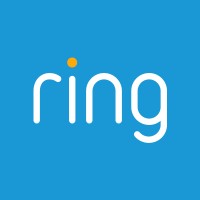On IT Visionaries, we talk a lot about security, but we mostly talk about cybersecurity and making sure that your networks are protected from cyber criminals. We don’t really talk about in-the-flesh criminals and how technology is helping to keep them out of your home.
But what is the value of home security? Is it being able to constantly check your front door to see if a package has arrived? Is it the calmness that comes with being notified that there’s movement in your driveway? Or is it simply the piece of mind that you get when you know that if something goes wrong, you’ll know it?
In 2014, Ring did something no other company had done: and gave homeowners a sense of security by providing a 24/7 view of their front door…
“[We ] had a mission around how to create a better layer of security for people to always be home. Our slogan is always home. What that did was allow people to either answer the door comfortably from their phone, whether they actually wanted to go to the door, or if you weren’t home, at least give the perception that you were home and the doorbell was really an amazing product to start with.”
Over the last seven years, Ring has built a business from doorbells, to an entire smart home that is accessible to everyday homeowners. Josh Roth is the CTO at Ring, and it’s his responsibility to build an ecosystem that gives those homeowners some piece of mind. On this episode of IT Visionaries, Josh discusses how Ring went from a start-up trying to find product-market fit, to an Amazon acquisition that now sells hundreds of thousands of security and smart devices every month.Enjoy!
Main Takeaways
- More Than A Doorbell: You products need to be able to make that initial connection with consumers, but your products and services must consistently remind the user why your technology is different from other products. For example, while a video doorbell was unique and gave users access to their home they didn’t have before, it was the software within the product and the Ring ecosystem which led to different consumer touchpoints and as a result added additional value.
- Letting Your Engineers Grow: Software engineers need the ability to explore new things, and they also need the freedom to fail. Your management style should cater to both those realities. And when you’re managing a group of engineers, it’s helpful to think about the product from their perspective, and also allow them to design and develop with as little friction as possible. When engineers feel as if they have more liberty, their creativity and innovation can break through.
- Customers Driving Innovation: Regardless of the size of your organization, you need to consistently be listening to your customers in order to drive innovation. Don’t just listen to your customer service team, especially when you are in the early stages of designing a product and customer feedback can make or break you. And when customers do come to you with problems, don’t pass them off, solve them yourself because if you can solve one problem for a single customer, you can solve that same problem for thousands.
For a more in-depth look at this episode, check out the article below.
Article
On IT Visionaries, we talk a lot about security, but we mostly talk about cybersecurity and making sure that your networks are protected from cyber criminals. We don’t really talk about in-the-flesh criminals and how technology is helping to keep them out of your home.
But what is the value of home security? Is it being able to constantly check your front door to see if a package has arrived? Is it the calmness that comes with being notified that there’s movement in your driveway? Or is it simply the piece of mind that you get when you know that if something goes wrong, you’ll know it? In 2014, Ring did something no company else had done: it gave homeowners a sense of security by providing a 24/7 view of their front door…
“[We ] had a mission around how to create a better layer of security for people to always be home. Our slogan is always home. What that did was allow people to either answer the door comfortably from their phone, whether they actually wanted to go to the door, or if you weren’t home, at least give the perception that you were home and the doorbell was really an amazing product to start with.”
Over the last seven years, Ring has built an empire off of not just doorbells, but an entire smart home that is accessible to everyday homeowners. Josh Roth is the CTO at Ring, and it’s his responsibility to build an ecosystem that gives those homeowners some piece of mind. On this episode of IT Visionaries, Josh discusses how Ring went from a start-up trying to find product-market fit, to a billion-dollar company that now sells hundreds of thousands of security and smart devices every month.
The mission of Ring has always been to help build and provide a better and more accessible security system to homeowners. But when Roth joined the company in 2015, he said it wasn’t necessarily the technology behind the product that energized him most.
“What really excited me was not just the early adopters,” he said. “It wasn’t just the Silicon Valley elites that were trying new products, but it was the late adopters. What we found was it was a single mom in Nebraska. It was the 80 year-old veteran who was in a wheelchair and couldn’t sort of get to the door fast enough in Virginia; it was a multitude of people.”
Ring did in fact take off, but the original video doorbell product wasn’t the only reason customers fell in love with the company. Ring’s success was built on its entire hardware and software ecosystem, which provided users with ways to do everything from being able to see your front door, to notifications about motion sensors and smoke detectors going off, to the neighborhood app that has built an entire community of like minded folks. Every facet of the product that the user touches is designed to keep the user engaged.
“I’m a big believer in products that are not out of sight out of mind out of mind,” Roth said. “Products are very difficult to get consumer adoption on. So one thing you’ll notice with Ring is we are definitely not out of sight out of mind. You are constantly aware of these things that you might not have been normally in the normal world. That was the light bulb going off over my head, which was, ‘Oh my gosh, we have this product that people are going to be aware of all the time and because of that, they’re going to love it,’ and so that was really the one that pushed me over the edge.”
When Ring was designing the initial doorbell, Roth stressed that the hardest part was designing an infrastructure for the product that was not only easy for customers to use, but also simple to install, which is a big reason why Ring has been laser focused on how their customers interact with the product since it’s early days.
“We’ve been extremely customer focused and customer obsessed,” he said. “We’ve built up a very robust, but super knowledgeable customer service team. The CEO literally had his office next to the customer service place, so we could hear what was going on. My office was literally right next to it as well. There was just so much customer-driven approach to things that we did.”
In fact, the organization was so focused on solving customer problems early on that Roth said he would actually take house calls so that he could figure out how to solve particular problems.
“There were times I would get Nextdoor feed coming through and I’d see a customer and be like, ‘Oh, my Ring is not working very well,’” Roth said. “If I saw they lived in the LA area, I would message them and say, ‘Hey, I’m the CTO of Ring, I’d love to come and help you fix that.’ The reason wasn’t just because I wanted that one customer to be happy. It was because if I can solve a customer’s problem, I can probably solve thousands of customer’s problems. It helped us figure out where the flaws in our setup process were.”
Customer success is the key to any product’s successful relationship with the consumers, but innovation is also key. To hear more about how Ring is continuing to innovate it’s product line, check out the full episode of IT Visionaries!
To hear the entire discussion, tune into IT Visionaries here.




